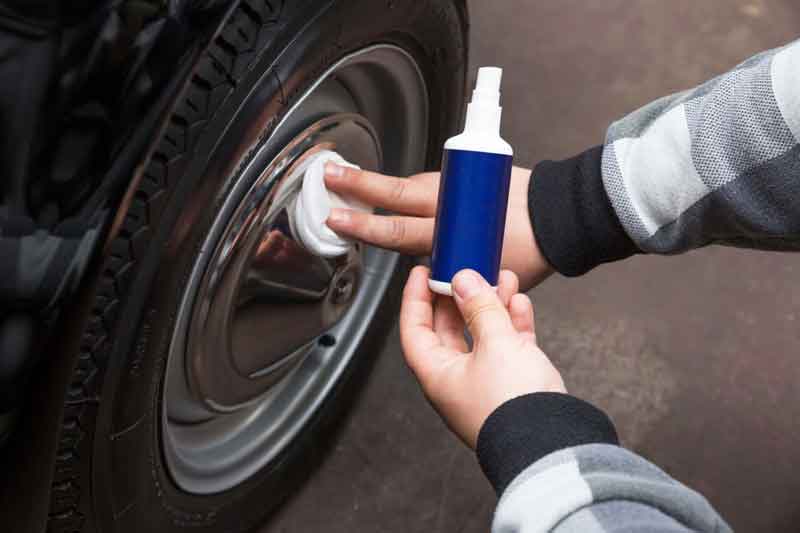Is there really much difference between the two? And is it true that they can be substituted?
If you’re new to the world of detailing, you might be wondering what the differences are between wheel cleaner and iron remover. On paper, they both appear to do the same thing. But do you need both in your detailing arsenal? Or can one substitute the other? What even is Iron remover, and what iron needs removing from your car or truck’s paintwork? Read on and find out all the answers.
Iron Remover? What’s that?
A relatively new addition to the automotive detailing market, iron remover is primarily found in spray bottle form. It is used to decontaminate surfaces, most commonly in preparation for a further step in the detailing process, such as using a clay bar or wax-sealing the body
Top Tip:
Iron Remover isn’t necessarily a solution for a full decontamination, as a clay bar is. In fact, a clay bar will still be able to remove iron particles by itself. But relying only on the clay lengthens the process spent when using the bar. Consider Iron remover as a shortcut.
An iron remover is specifically formulated to attack metal particles that have bonded to your car's clear coat. It does so by rapidly accelerating the oxidation process of these metal fragments. You’ll notice that the particles change in color as the spray dissolves them off the paint surface.
How do metal particles end up on your vehicle’s paintwork in the first place? Metal pieces are found in the atmosphere due to a variety of reasons, but when it comes to vehicles, there are two main culprits: trains (which transport many new cars even before they’re seen by the showroom), and industrial fallout. You may not realize it when metal particles come to rest on your paintwork. But as these particles subsequently get stuck they begin to rust, causing brownish spots that are especially noticeable on lighter-colored cars.
An iron remover will work to eat these particles of metal up, oxidizing them so that they can easily be removed with a light wash or towel.
Top Tip:
You don’t want to let iron remover sit on plastic trim for too long. This is due to the active ingredients in iron remover. As they aim to speed up oxidation, although safe on painted surfaces, this isn’t ideal for plastics, which are susceptible to oxidation and should be protected. Either tape-up any exposed trim or wash any iron remover off without letting it sit.
The Deal With Wheel Cleaner
Wheel cleaners have long been loved by detailing professionals. They’re able to eat up brake dust and dissolve the unsightly soot-like dirt far more effectively than soap or shampoo.
Wheel cleaners often come in spray bottles, which can be used to tackle a wheel at a time. Then, while using a wheel brush to agitate any heavy dirt, you can rinse off the wheel-cleaning solution, revealing a sparklingly clean wheel that bears no resemblance to what you started out with. The process is as straightforward as they come.
Top Tip:
Don’t be afraid to tackle your tires with wheel cleaner too. Although not always as effective as getting mud and other road grime off the rubber, so long as it’s washed away quickly, using wheel cleaner can be a great preparation step before application of a long-lasting tire shine.
Now you might think that wheel cleaner must be specialized in its application, and couldn’t possibly be used on paintwork. But, if you consider that brake dust is predominantly made up of metal particles (from the brake pads and rotors), then you might start to see the argument.
In fact, the composition of most wheel cleaners is very similar to that of iron removers. They too use a chemical reaction to eat away at the metallic brake dust. And modern wheels are often painted too, meaning that wheel cleaners have to be gentle enough not to harm these surfaces
So, What’s the Difference Between Iron Remover and Wheel Cleaner
At this point, you may be wondering what the differences between the two products are and whether one can be substituted for the other.
The main differences boil down to two key factors: cost and consistency. A wheel cleaner is often the cheaper of the two products (although brands may vary), but it's always good to shop around for the best deal. This is in some part down to the fact that a wheel cleaner is more likely to be used during every wash. An iron remover, on the other hand, may not be used for as long as six months at a stretch.
Conversely, though, an iron remover is intended to be used on all painted surfaces of a car, meaning more of the product will be used per application. A wheel cleaner is intended just for the wheels.
Bearing those factors in mind, the consistency and concentration of wheel cleaners and iron removers are two big differences. Wheel cleaners are designed to “cling” more effectively, with a foaming consistency so as to catch all the intricacies that appear on various wheel designs.
Iron removers tend to be “runnier”, and foam less. Their application is on paintwork, so the need for it to sit on the surface is not as great.
Aside from these two differences, in the vast majority of examples out there, one can actually be substituted for the other. Although it might pay off to do research on some specific examples and cost comparisons, the savvy detailer could potentially save on product spend by just sticking to wheel cleaner or iron remover!
